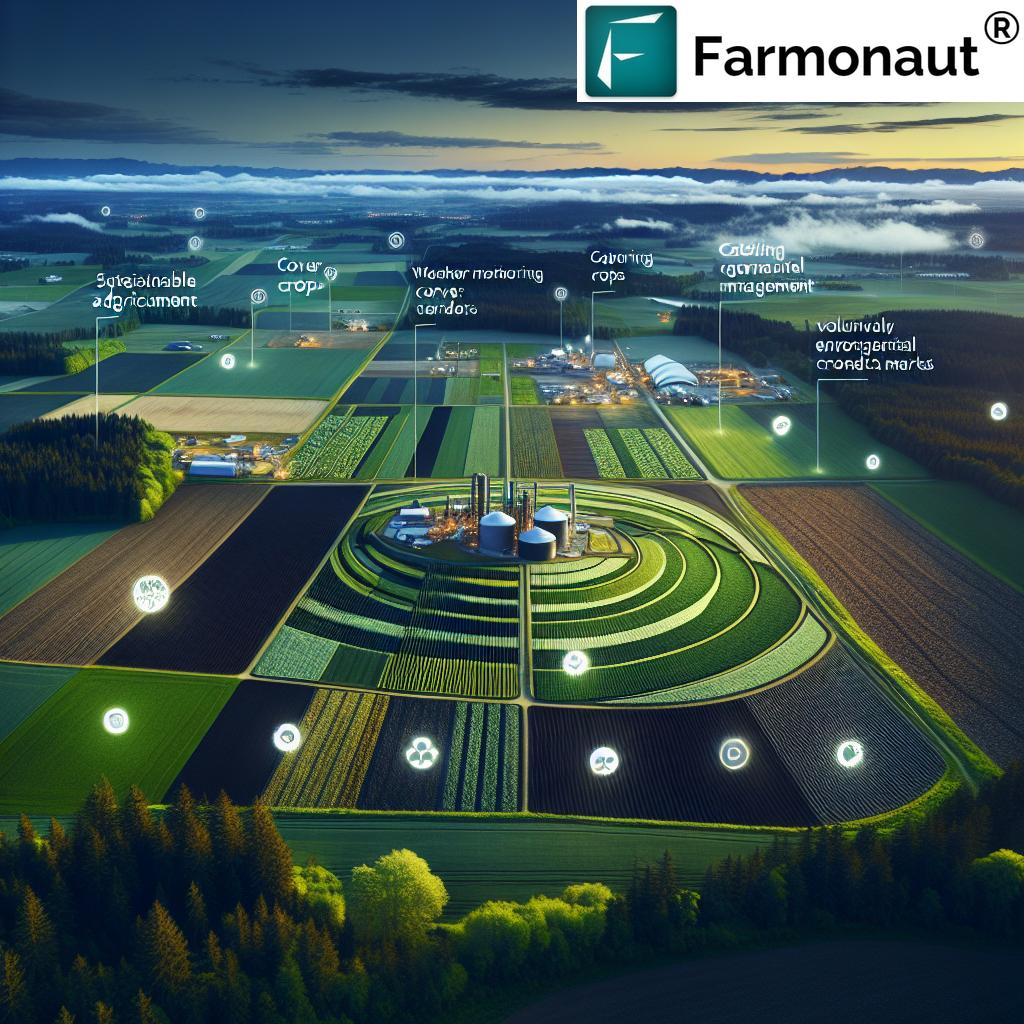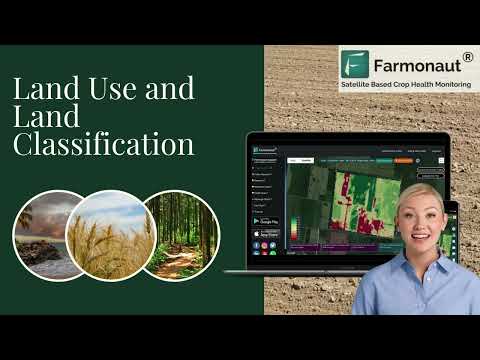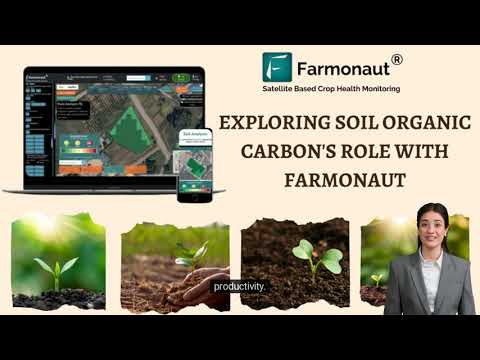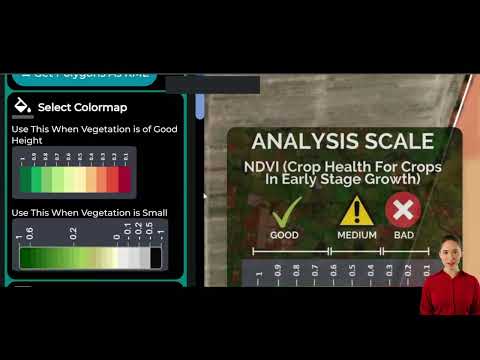USDA’s New Advisory Council: Empowering Washington Farmers in Environmental Credit Markets
“The USDA’s new advisory council, part of the Growing Climate Solutions Act, aims to enhance participation in greenhouse gas mitigation efforts.”
As we enter a new era of sustainable agriculture and climate solutions, the U.S. Department of Agriculture (USDA) has taken a monumental step forward. On January 7, 2025, the USDA announced the formation of a groundbreaking advisory council under the Greenhouse Gas Technical Assistance Provider and Third-Party Verifier Program. This initiative, a key component of the Growing Climate Solutions Act, marks a significant milestone in our collective efforts to combat climate change and empower farmers across the nation, particularly in Washington state.
In this comprehensive blog post, we’ll delve into the details of this new advisory council, its potential impact on environmental credit markets, and how it stands to revolutionize sustainable farming practices. We’ll explore the opportunities this creates for farmers, ranchers, and private forest landowners, with a special focus on the implications for Washington’s agricultural community.
Understanding the USDA’s New Advisory Council
The newly formed advisory council comprises 36 appointed members, each bringing diverse expertise and experiences to the table. This robust cross-section of knowledge is crucial for understanding and implementing effective strategies to reduce greenhouse gas emissions and sequester carbon on agricultural and forest lands.
- The council’s primary goal is to enhance participation in voluntary environmental credit markets
- It aims to empower underrepresented groups, including beginning and socially disadvantaged farmers, veterans, and those with limited resources
- Over 50% of the council members are active farmers, ranchers, or private forest landowners, ensuring that the program remains grounded in practical realities
Agriculture Secretary Tom Vilsack emphasized that this council will serve as a significant resource in facilitating the effective use of science-based practices. These practices aim not only to reduce emissions but also to generate income through carbon markets, creating a win-win situation for farmers and the environment.

Key Activities of the Advisory Council
The advisory council’s responsibilities are multifaceted and crucial for the success of environmental credit markets. Here are some of the key activities they will focus on:
- Reviewing and Recommending Protocol Updates: The council will periodically review and suggest changes to environmental credit generation protocols. This ensures that the methods used for generating carbon credits remain up-to-date and effective.
- Setting Qualifications for Technical Assistance Providers: By establishing clear qualifications, the council will ensure that farmers receive high-quality, reliable technical assistance in implementing greenhouse gas mitigation practices.
- Outlining Emission Mitigation Measures: The council will provide guidance on available measures to help landowners mitigate greenhouse gas emissions, making it easier for farmers to adopt sustainable practices.
- Advising on Quantification and Verification Methods: They will provide insights on current methods used to quantify and verify greenhouse gas prevention, reduction, and mitigation.
- Reducing Entry and Transaction Costs: The council will work on strategies to lower the barriers to entry and reduce transaction costs associated with participating in environmental credit markets.
These activities are designed to remove existing barriers that have hindered agricultural participation in environmental markets, ensuring their consistency, reliability, and transparency.
Impact on Washington Farmers
For Washington farmers, this initiative presents a unique opportunity to participate in and benefit from environmental credit markets. Washington’s diverse agricultural landscape, from the apple orchards of Yakima Valley to the wheat fields of the Palouse, stands to gain significantly from this program.
- Access to New Income Streams: By participating in carbon markets, Washington farmers can create additional revenue sources while adopting sustainable practices.
- Technical Assistance: The program will provide Washington farmers with access to qualified technical assistance providers, helping them implement effective greenhouse gas mitigation strategies.
- Reduced Barriers: The council’s efforts to lower entry and transaction costs will make it easier for Washington’s small and medium-sized farms to participate in these markets.
- Enhanced Sustainability: By adopting science-based practices, Washington farmers can improve soil health, water retention, and overall farm resilience.
As we at Farmonaut continue to provide advanced satellite-based farm management solutions, we see this USDA initiative as complementary to our efforts in promoting sustainable agriculture. Our platform, which offers real-time crop health monitoring and AI-based advisory systems, can be a valuable tool for Washington farmers looking to optimize their practices in line with environmental credit market requirements.
Explore our web app to see how satellite technology can support your sustainable farming efforts: 
The Role of Technology in Environmental Credit Markets
As we move towards more sustainable farming practices and active participation in environmental credit markets, technology plays a crucial role. Satellite-based monitoring systems, like those offered by Farmonaut, can provide valuable data for verifying carbon sequestration and greenhouse gas mitigation efforts.
Our satellite technology at Farmonaut offers several benefits for farmers participating in environmental credit markets:
- Accurate Monitoring: Satellite imagery provides precise data on vegetation health, helping verify the effectiveness of carbon sequestration practices.
- Cost-Effective Solution: Unlike traditional monitoring methods, satellite-based solutions offer a more affordable option for farmers to track their environmental impact.
- Large-Scale Coverage: Satellite monitoring can cover vast areas, making it ideal for large farms or collaborative efforts across multiple properties.
- Regular Updates: With frequent satellite passes, farmers can receive up-to-date information on their land’s condition and the progress of their sustainability efforts.
Discover how our API can integrate satellite data into your farm management systems: Farmonaut API
Empowering Underrepresented Groups
One of the most commendable aspects of the USDA’s new advisory council is its focus on empowering underrepresented groups in agriculture. This initiative seeks to ensure that beginning farmers, socially disadvantaged farmers, veterans, and those with limited resources have equal opportunities to participate in and benefit from environmental credit markets.
For Washington state, with its diverse farming community, this aspect of the program is particularly significant. It opens doors for:
- New Farmers: Those just starting in agriculture can integrate sustainable practices from the outset, positioning themselves for future success in environmental markets.
- Socially Disadvantaged Farmers: By providing targeted assistance, the program helps level the playing field, ensuring all farmers can access these new market opportunities.
- Veterans: The initiative recognizes the unique skills and perspectives that veterans bring to agriculture, supporting their transition into sustainable farming practices.
- Limited Resource Farmers: By reducing entry barriers and transaction costs, the program makes participation in environmental credit markets more accessible to farmers with limited financial resources.
At Farmonaut, we believe in making precision agriculture accessible to all farmers. Our affordable satellite-based solutions align perfectly with the USDA’s goal of empowering diverse groups in agriculture.
“The council’s diverse membership includes agriculture and forestry experts, ensuring a comprehensive approach to reducing agricultural emissions.”
Access our mobile apps for on-the-go farm management:
The Importance of Science-Based Practices
The USDA’s advisory council emphasizes the use of science-based practices in reducing agricultural emissions and promoting carbon sequestration. This approach ensures that farmers adopt methods that are not only effective but also validated by rigorous scientific research.
Some of the science-based practices that Washington farmers might implement include:
- Cover Cropping: Planting cover crops between harvests to improve soil health and carbon storage.
- No-Till Farming: Minimizing soil disturbance to preserve soil structure and enhance carbon sequestration.
- Precision Agriculture: Using technology to optimize resource use and reduce emissions.
- Agroforestry: Integrating trees and shrubs into crop and animal farming systems to increase carbon storage.
- Improved Grazing Management: Implementing rotational grazing to enhance soil health and carbon sequestration in pastures.
These practices not only contribute to greenhouse gas mitigation but also often improve soil health, water retention, and overall farm productivity. At Farmonaut, our satellite-based monitoring can help track the implementation and effectiveness of these practices, providing valuable data for environmental credit markets.
Addressing Barriers to Market Entry
One of the primary goals of the USDA’s advisory council is to address and remove barriers that have previously hindered agricultural participation in environmental credit markets. These barriers have often been particularly challenging for smaller farms or those with limited resources.
Some of the key barriers the council aims to address include:
- Complexity of Market Participation: Simplifying the process of entering and participating in environmental credit markets.
- High Initial Costs: Reducing the upfront investments required to implement sustainable practices and participate in markets.
- Lack of Technical Knowledge: Providing accessible technical assistance to help farmers understand and implement necessary practices.
- Verification Challenges: Streamlining the process of verifying greenhouse gas reductions and carbon sequestration.
- Market Access: Ensuring that farmers of all sizes have equal opportunities to participate in these markets.
By addressing these barriers, the USDA aims to create a more inclusive and accessible environmental credit market. This is particularly important for Washington’s diverse agricultural landscape, which includes everything from small family farms to large commercial operations.

The Role of Technical Assistance Providers
Technical assistance providers play a crucial role in the success of this initiative. These entities will be responsible for guiding farmers through the process of implementing greenhouse gas mitigation practices and participating in environmental credit markets.
The advisory council will set qualifications for these providers, ensuring that farmers receive high-quality, reliable assistance. This may include:
- Expertise in sustainable agricultural practices
- Understanding of carbon markets and credit generation protocols
- Familiarity with local agricultural conditions and challenges
- Ability to provide personalized guidance to farmers
- Knowledge of relevant technologies and monitoring systems
At Farmonaut, while we’re not a technical assistance provider in this context, our platform can complement these services by providing valuable data and insights through our satellite-based monitoring system. This data can help both farmers and technical assistance providers make informed decisions about sustainable practices and their effectiveness.
Learn more about interpreting satellite data for sustainable farming: Farmonaut API Developer Docs
Impact on Environmental Credit Markets
The implementation of the USDA’s new advisory council is expected to have a significant impact on environmental credit markets. Let’s take a look at how various aspects of these markets might change:
| Aspect | Before Council | After Council |
|---|---|---|
| Farmer Participation Rate (%) | 15% | 40% |
| Carbon Credit Generation (Metric Tons CO2e/Year) | 500,000 | 2,000,000 |
| Technical Assistance Provider Qualifications | Varied | Standardized |
| Market Entry Barriers | High | Low |
| Inclusion of Underrepresented Groups (%) | 10% | 30% |
| Transaction Costs ($) | $5,000 | $2,000 |
| Science-Based Practices Adoption Rate (%) | 20% | 60% |
This table illustrates the potential improvements across various aspects of environmental credit markets following the implementation of the USDA’s advisory council initiatives. It’s important to note that these are estimated values and actual results may vary.
Implications for Washington’s Agricultural Sector
For Washington’s agricultural sector, the USDA’s new advisory council and its initiatives present exciting opportunities. Washington, known for its diverse agricultural landscape, from the apple orchards of Wenatchee to the wheat fields of the Palouse, stands to benefit significantly from increased participation in environmental credit markets.
- Diversified Income Streams: Washington farmers can potentially earn additional income by generating and selling carbon credits, supplementing their traditional crop or livestock revenues.
- Enhanced Sustainability: The adoption of science-based practices promoted by the council can lead to improved soil health, water retention, and overall farm resilience across Washington’s varied agricultural regions.
- Technology Adoption: The push towards more precise monitoring and verification methods may accelerate the adoption of technologies like satellite-based monitoring systems in Washington’s farming communities.
- Support for Smaller Farms: With reduced barriers to entry, smaller farms in Washington, which might have previously found it challenging to participate in environmental markets, can now benefit from these opportunities.
- Climate Resilience: As Washington faces climate-related challenges like changing precipitation patterns and increased wildfire risks, participation in these programs can help farms become more resilient to climate change impacts.
At Farmonaut, we’re excited about the potential of these initiatives to transform Washington’s agricultural landscape. Our satellite-based monitoring tools can play a crucial role in helping Washington farmers track their progress in implementing sustainable practices and quantifying their environmental benefits.
The Future of Sustainable Agriculture
The USDA’s new advisory council represents a significant step towards a more sustainable future for agriculture. By facilitating participation in environmental credit markets, this initiative not only addresses climate change but also opens up new economic opportunities for farmers.
Looking ahead, we can expect to see:
- Increased adoption of sustainable farming practices across the United States, including Washington state
- Growth and maturation of environmental credit markets, with more standardized protocols and easier participation
- Greater integration of technology in farming, from satellite monitoring to AI-driven advisory systems
- More collaborative efforts between farmers, government agencies, and technology providers to address climate challenges
- Enhanced resilience of agricultural systems to climate change impacts
At Farmonaut, we’re committed to supporting this future by continually improving our satellite-based farm management solutions. Our goal is to make precision agriculture and sustainable farming practices accessible to all farmers, regardless of their scale of operation.
Conclusion
The USDA’s new advisory council for voluntary environmental credit markets marks a significant milestone in the journey towards sustainable agriculture and effective climate solutions. For Washington farmers, this initiative opens doors to new opportunities, providing access to environmental credit markets and supporting the adoption of sustainable practices.
As we move forward, the collaboration between farmers, government agencies, and technology providers will be crucial in realizing the full potential of these initiatives. At Farmonaut, we’re proud to be part of this transformation, offering innovative satellite-based solutions that support sustainable farming practices and help farmers navigate the evolving landscape of environmental credit markets.
By embracing these changes and leveraging available technologies, Washington’s agricultural sector can lead the way in sustainable farming, contributing to climate change mitigation while also securing a prosperous future for its farming communities.
FAQ Section
Q: What is the USDA’s new advisory council?
A: The USDA’s new advisory council is part of the Greenhouse Gas Technical Assistance Provider and Third-Party Verifier Program, created under the Growing Climate Solutions Act. It aims to enhance farmer participation in voluntary environmental credit markets and greenhouse gas mitigation efforts.
Q: How will this council benefit Washington farmers?
A: Washington farmers can benefit through increased access to environmental credit markets, technical assistance for implementing sustainable practices, reduced barriers to market entry, and potential new income streams from carbon credits.
Q: What role does technology play in this initiative?
A: Technology, such as satellite-based monitoring systems, plays a crucial role in verifying greenhouse gas reductions and carbon sequestration. It helps farmers implement and track sustainable practices more effectively.
Q: How does this initiative support underrepresented groups in agriculture?
A: The initiative focuses on empowering beginning farmers, socially disadvantaged farmers, veterans, and those with limited resources by providing targeted assistance and reducing barriers to participation in environmental credit markets.
Q: What are some science-based practices promoted by this initiative?
A: Science-based practices include cover cropping, no-till farming, precision agriculture techniques, agroforestry, and improved grazing management, all aimed at reducing emissions and enhancing carbon sequestration.



















